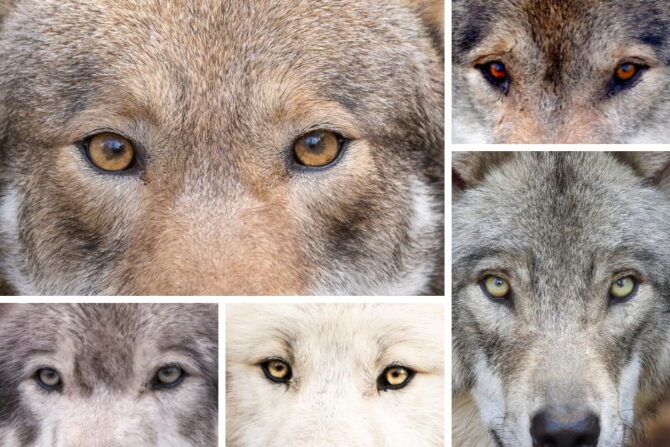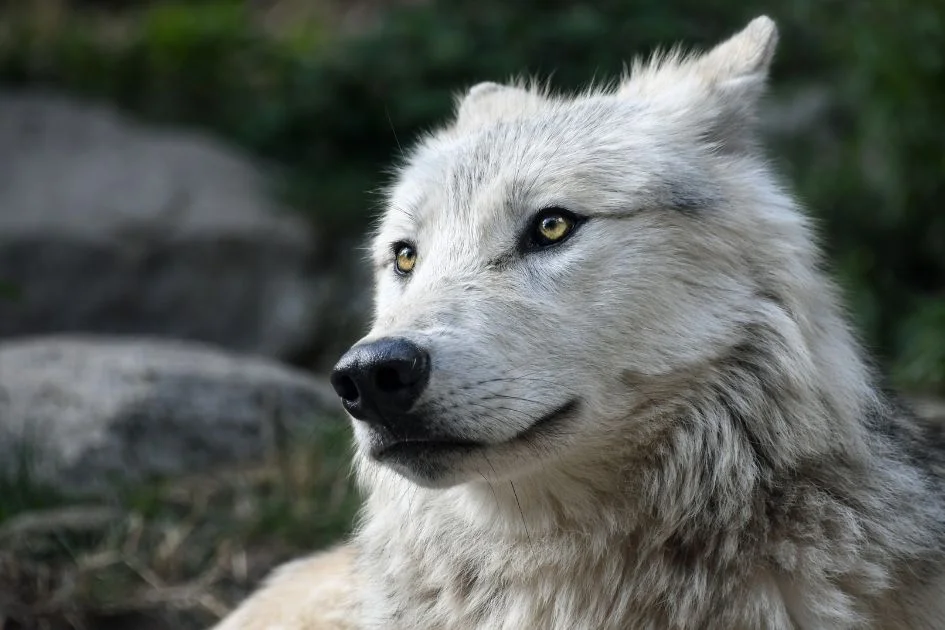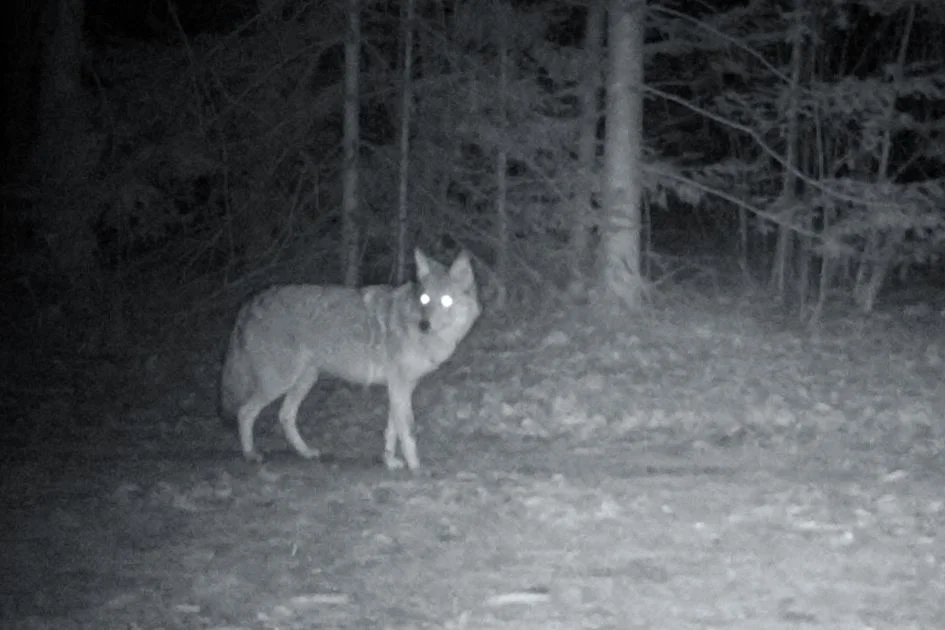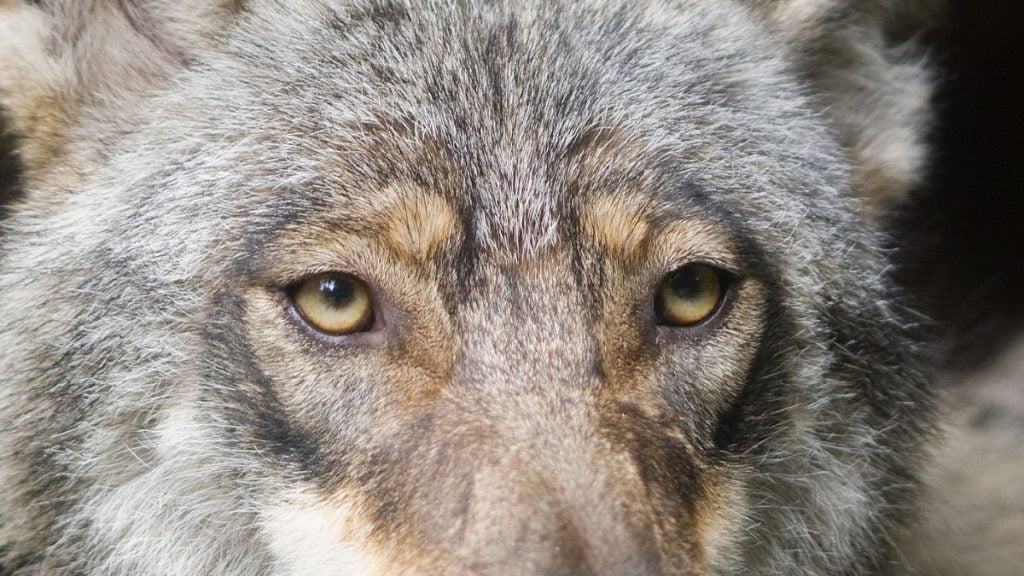Most wolves have yellow eyes, and that happens to be the common wolf eye color. However, they also have brown, green, blue, and even orange colors.
It depends on factors like genes, the melanin level in the iris, and age. Similar to humans, wolves have a variety of eye colors.
There are a lot of misconceptions about the different wolf eye colors, especially the popular yellow color.
The parading myth has always been that wolves have yellow eyes because of their night vision.
Some folks also believe that the blue color is more common than yellow, thanks to television ads and movies.
As we go into detail about the color of wolves eyes, we’ll also tackle these misconceptions.
What Color are Wolves Eyes?

Contrary to the blue eyes myth, the dominant trait is the yellow eye color, just as the dominant one of humans is brown.
Many humans have brown eyes, but not all humans do. The same logic applies to wolves. Some have blue eyes, green, orange, hazel, and brown.
As we’ve established, factors like genes and age influence a wolf’s eye color.
For example, many wolf pups can have blue eyes which would only develop to yellow after they grow.
Genes, of course, are the biggest factor. The dominant and recessive eye color traits in the parents determine what color the pup will have.
What is the Rarest Wolf Eye Color?
While yellow is the most popular eye color, green is hardly seen on wolves. Those with green eyes don’t maintain it permanently.
As they grow, the green eyes might change to either blue or yellow. A wolf with permanent green eyes is an oddity.
Green is also a rare eye color amongst humans, with only 9% having it in the United States, and just about 2% worldwide.
Do Wolves Always Have Yellow Eyes?
Not every wolf has yellow eyes, but most adult wolves do. Yellow is a dominant trait and will always overshadow other eye colors, whether brown, blue, or hazel.
If a brown-eyed wolf mates with a yellow wolf, the litter will be composed of more yellow-eyed pups.
The only time a wolf can come with a different eye color is if the parents have no yellow gene.
Here’s an illustration using Y for Yellow and y for brown:
- YY +yy (yellow + brown) = All yellow
- Yy + yy (yellow (with brown recessive) + brown) = Mostly yellow
- yy + yy (brown + brown) = All brown
Why Do More Wolves Have Yellow Eyes?

Like humans, wolves get two types of genes from their parents: the dominant gene and the recessive gene.
In eye color, as yellow is the dominant gene, it appears in more wolves than blue, green, brown, and hazel.
The wolf’s eye color genes influence the amount of melanin that would appear on the iris, and the dominant yellow gene would end up influencing the eye color, even when the recessive one was first displayed.
This is why some pups can start with blue eyes and then transit to yellow.
What About Wolves with Blue Eyes?
Blue eyes are attractive, both in humans and animals. Therefore, it isn’t surprising that many wolves in movies and ads have blue eyes.
Also, wolves in movies are not usually real wolves. Many are huskies, and the latter have blue eyes as the dominant eye color.
Wolf puppies tend to have blue eyes because they are still growing and the figments aren’t fully developed yet.
As the pups grow, their eyes turn green before changing to a complete yellow. This happens to some dog breeds as well.
Can a Wolf Have Purple Eyes?
Purple is not a color associated with wolf eyes, so we shouldn’t expect to see a wolf with purple eyes.
However, when a wolf is still a pup, its eyes might appear purple after birth. It might also look that way at night, because of the tapetum lucidum.
The tapetum lucidum refers to the reflective layer in the wolf’s eyes (and that of many other animals), that enables it to see at night.
Light-reflecting on blue eyes can make them seem purple.
Can a Wolf Have Red Eyes?
No, red is not a primary wolf eye color. Wolves cannot have natural red eyes, as no gene leads to red eyes in these canines.
However, it is possible to see an adult wolf with red eyes at night. This also happens because of the tapetum lucidum.
Just as it makes a wolf pup’s eyes look purple at night, the reflective layer in the adult wolf can cause the yellow eyes to look red.
It is an illusion, though. The eyes do not change to red in reality.
Why do Wolves Eyes Glow at Night?

The tapetum lucidum that can make a wolf’s eye seem red or yellow is the same reason the eyes glow at night.
This is the layer that makes them able to see at night. Because of the reflective nature of this layer, someone looking at a wolf from far will see the eyes glowing.
Some people believe that the reason wolves see well at night is due to the yellow color. That is not true.
The yellow color is just a color like blue and brown. It isn’t the main cause of night vision in wolves.
Night vision gives wolves a good advantage as nocturnal animals. They’re able to navigate their surrounding at night and detect prey.
They aren’t the only animals with night vision, though. Cats, dogs, owls, and snakes all have night visions.
The Wolf Eye Shape
The wolf’s eye is either almond or round. More wolves have almond eyes than round ones, and the eyes are often narrow.
The eyes stay close together and are at angles of 45 degrees, which helps during hunting.
Their eyes also stay focused forward, not at the sides, because they are not prey and don’t need to always be alert.
They have a 180-degree vision, which is bigger than the human’s 120-degree vision, but smaller than the rabbit’s 360 degrees.
Wolf Eyes vs Dog Eyes Comparison
The wolf’s close relative is the domestic dog, and history proves that the domestic dog is a descendant of the wolf.
Some experts still see the domestic dog as a subspecies of the wolf, others divide them.
Either way, the domestic dog and the wolf are close, and some breeds of domestic dogs are confused for wolves. Therefore, we would be comparing the eyes.
Do Wolves and Dogs Have the Same Eyes?
While it is possible to see a dog and wolf with the same eye color, the predominant color trait of dogs and wolves aren’t the same.
Wolves have yellow as common eye color, dogs have brown or blue eyes. Both animals have night vision, and their eyes can glow at night.
The eye shapes differ too. Dogs usually have round eyes than almonds, while wolves have more almonds.
The dog’s eyes don’t slant too close to their faces like those of a wolf. Dogs also have a higher degree of vision of 240 degrees.
Final Thoughts on Wolf Eye Colors
Wolves can have different eye colors, but the most common is yellow—not blue as most people think. Pups tend to have blue eyes which change as they grow older.
Sometimes you might see a wolf with an unusual eye color like red, but that’s an illusion caused by the tapetum lucidum, which gives them night vision and also makes their eyes glow.
The shape and position of the wolf’s eyes attest to it being a formidable predator.






